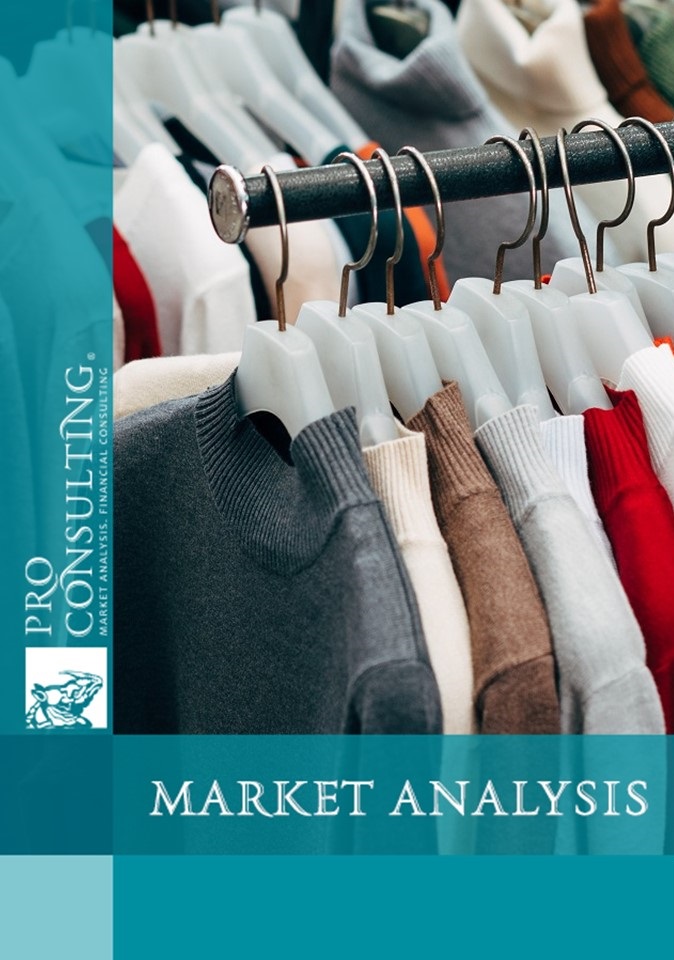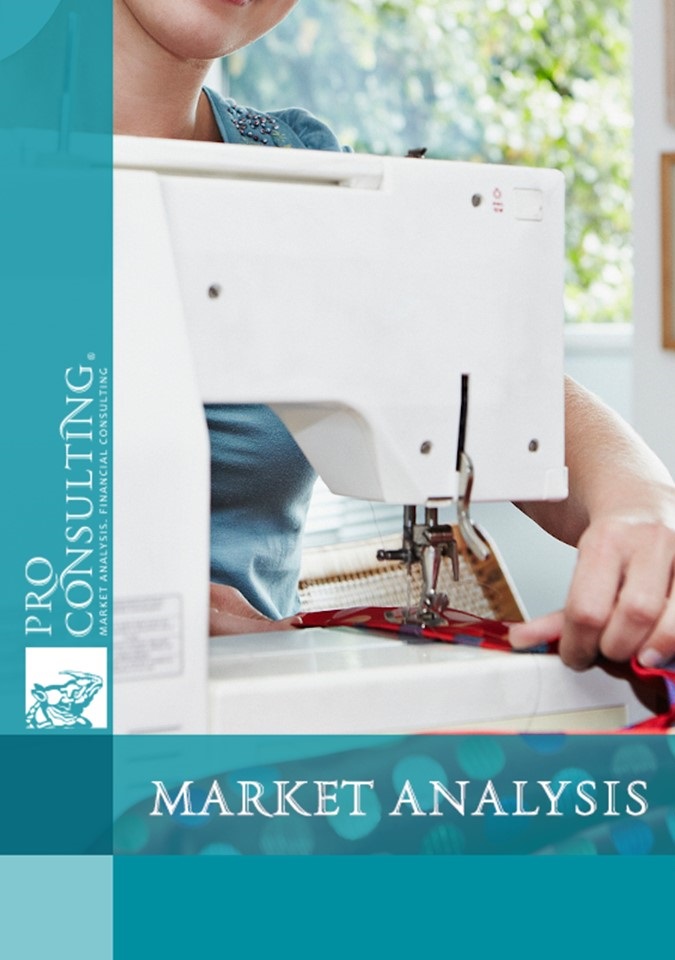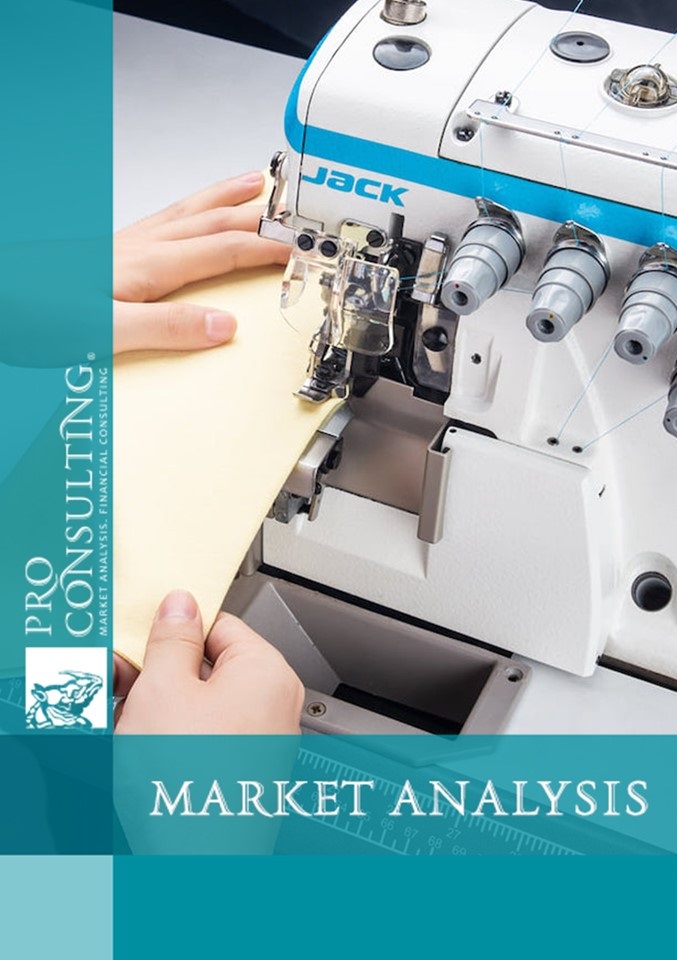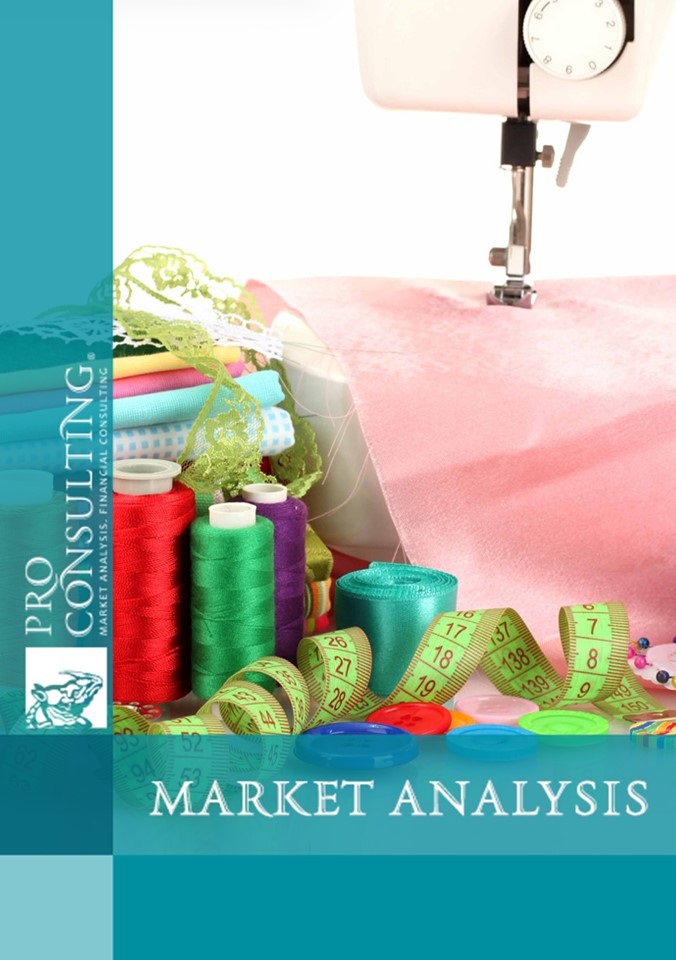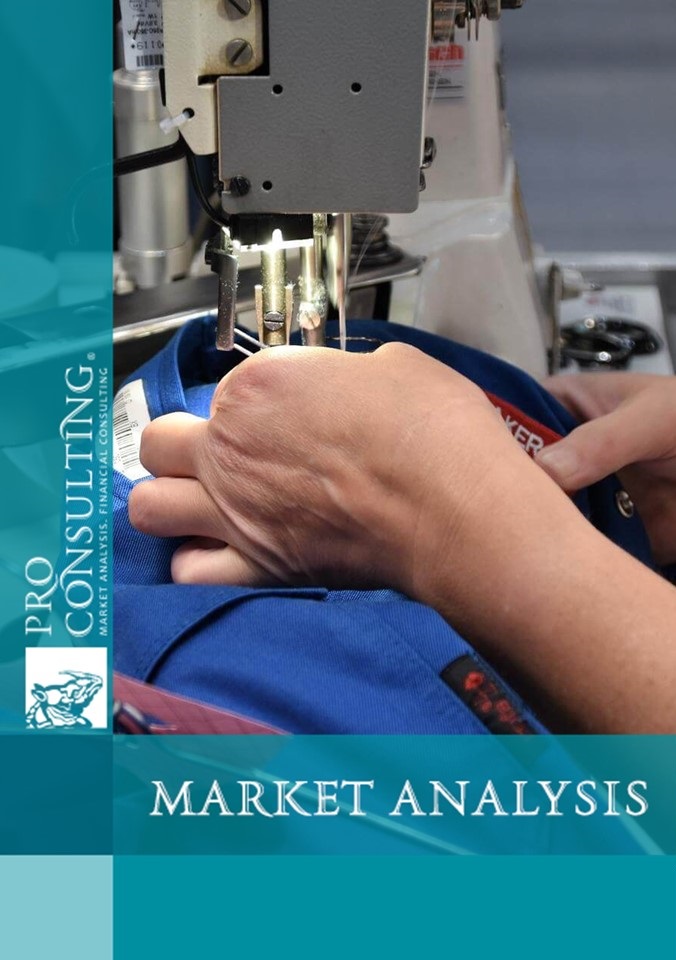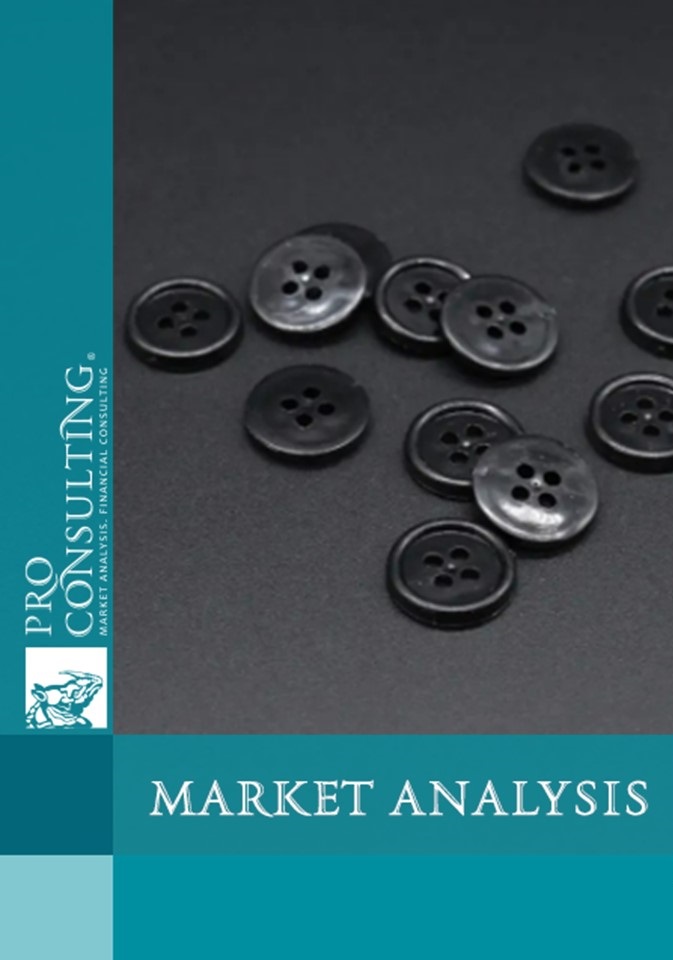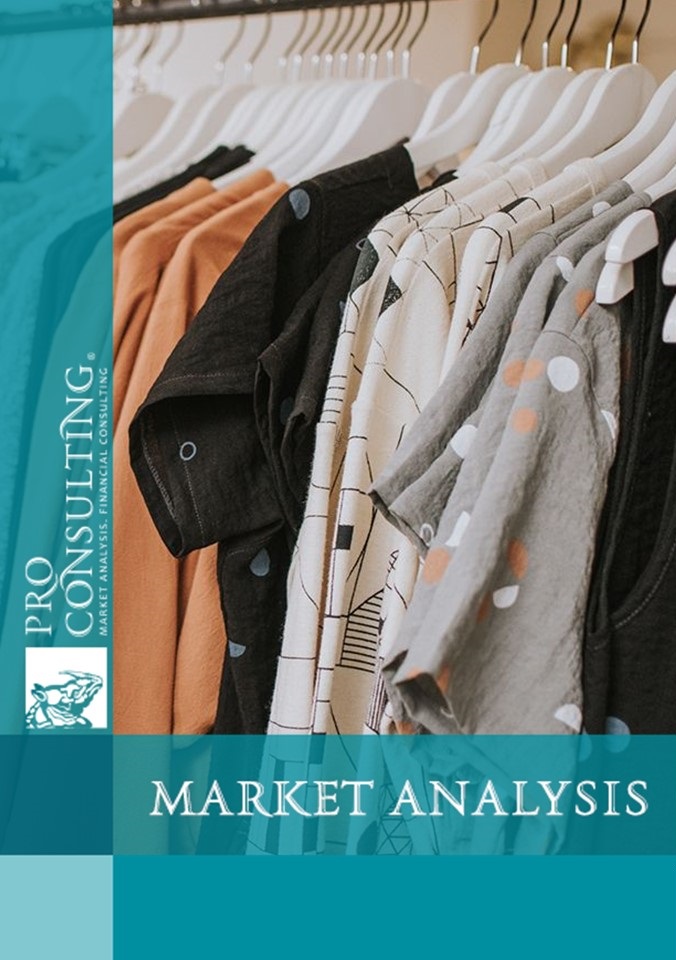Market research report on industrial sewing equipment in Brazil. 2024 year

| Date of Preparation: | April 2024 year |
| Number of pages: | 28, Arial, 1 interval, 10 skittles |
| Graphs and charts: | 5 |
| Tables: | 18 |
| Payment method: | prepayment |
| Production method: | e-mail or courier electronically or in printed form |
| Report language: | ukrainian, russian, english |
- This report can be updated and customized based on your business goals; you can also purchase part of report (no less than 50%) at a more affordable price
- Failed to find your market research report? - contact us
- You can also order feasibility study and business plan for your business idea




Detailed contents:
1.1. Analysis of market development trends (factors affecting the market and their manifestation during the researched period: macro factors, the state of related industries and suppliers, changes in consumer behavior; problems and prerequisites for development)
1.2. General market indicators, calculation of market capacity in 2021-2023 (estimate)
1.3. Assessment of the shadow segment in the market (resale and other possible shadow channels)
2. State regulation of the industry
2.1. Presence of regulatory restrictions
2.2. Market taxes and fees (general business taxation; import and export duties, plans to change them (if available))
3. Main market operators (local and foreign suppliers of industrial sewing equipment present on the market)
3.1. The list of the main market operators and their structuring (general information, types of activities and specialization; product groups and assortment; representation in regions and sales channels)
3.2. Market shares of the main market operators (estimate)
3.3. Regional representation of the main operators of the sewing equipment market and the key regions of the location of consumers
4. Foreign trade and foreign trade
4.1. Export of sewing equipment from Brazil in 2019-2023 (volumes, structure, geography)
4.2. Import of sewing equipment to Brazil in 2019-2023 (volumes, structure, geography)
5. Price and pricing in the market. Equipment prices (import prices and supplier prices)
6. Market consumption analysis
6.1. Analysis of the state of light industry in the country
6.2. Main market indicators (sales, production volume)
6.3. List of the largest companies / factories operating on the market
6.4. Potential consumers in the market
7. Conclusions. Predictive market indicators
7.1. Conclusions and forecast trends of market development
7.2. Construction of market development hypotheses. Forecast indicators of market development in 2024-2026.
7.3. Recommendations for market development
8. Investment attractiveness of the industry
8.1. SWOT analysis of the Customer's company in the potential market
8.2. PEST LE - analysis of factors affecting the market and assessment of the probability and degree of their influence
8.3. Existing risks and barriers to market entry
List of Tables:
1. Market capacity of industrial sewing equipment in 2019-2023, in monetary terms, million US dollars
2. The number of ads for the sale of used equipment in Brazil as of April 10, 2024
3. Dynamics of export of sewing equipment from Brazil by product groups in 2019-2023, in monetary terms, million dollars USA
4. Dynamics of export of sewing equipment from Brazil by country in 2019-2023, in monetary terms, million dollars USA
5. Dynamics of import of sewing equipment to Brazil by goods in 2019-2023, in monetary terms, million dollars USA
6. Geography of import of sewing equipment to Brazil in 2019-2023, in monetary terms, million dollars USA
7. Average import prices for industrial sewing equipment to Brazil in 2019-2023, in monetary terms, USD/pc.
8. Average current retail prices (range) for industrial sewing equipment in Brazil by origin as of April 2024, USD/unit, including VAT
9. Average retail prices for selected products in Brazil as of April 2024, USD/unit, including VAT
10. Capacity of the textile market in Brazil in 2020-2022, in physical and monetary terms, million tons, million USD
11. Brazil Apparel Market Capacity in 2020-2022, in Physical and Monetary Terms, Billions of Units, Millions of USD
12. The largest companies and their factories in Brazil
13. Potential consumers of the industrial sewing equipment market in Brazil
14. SWOT analysis of the company on the market of industrial sewing equipment in Brazil
15. Market forecast based on SWOT analysis
16. PEST LE - analysis of the sewing equipment market
17. Risk map of the industrial sewing equipment market in Brazil
18. The main barriers for a new player to enter the sewing equipment market in Brazil
List of graphs and charts:
1. The share of the main operators of the sewing equipment market in 2023, %
2. Regional representation of the main operators of the sewing equipment market and key regions of the sewing industry
3. Dynamics of export of sewing equipment from Brazil in 2019-2023, in monetary terms, million dollars USA
4. Dynamics of import of sewing equipment to Brazil in 2019-2023, in monetary terms, million dollars USA
5. Forecast capacity of the sewing equipment market in Brazil in 2024-2026, in monetary terms, million dollars USA
